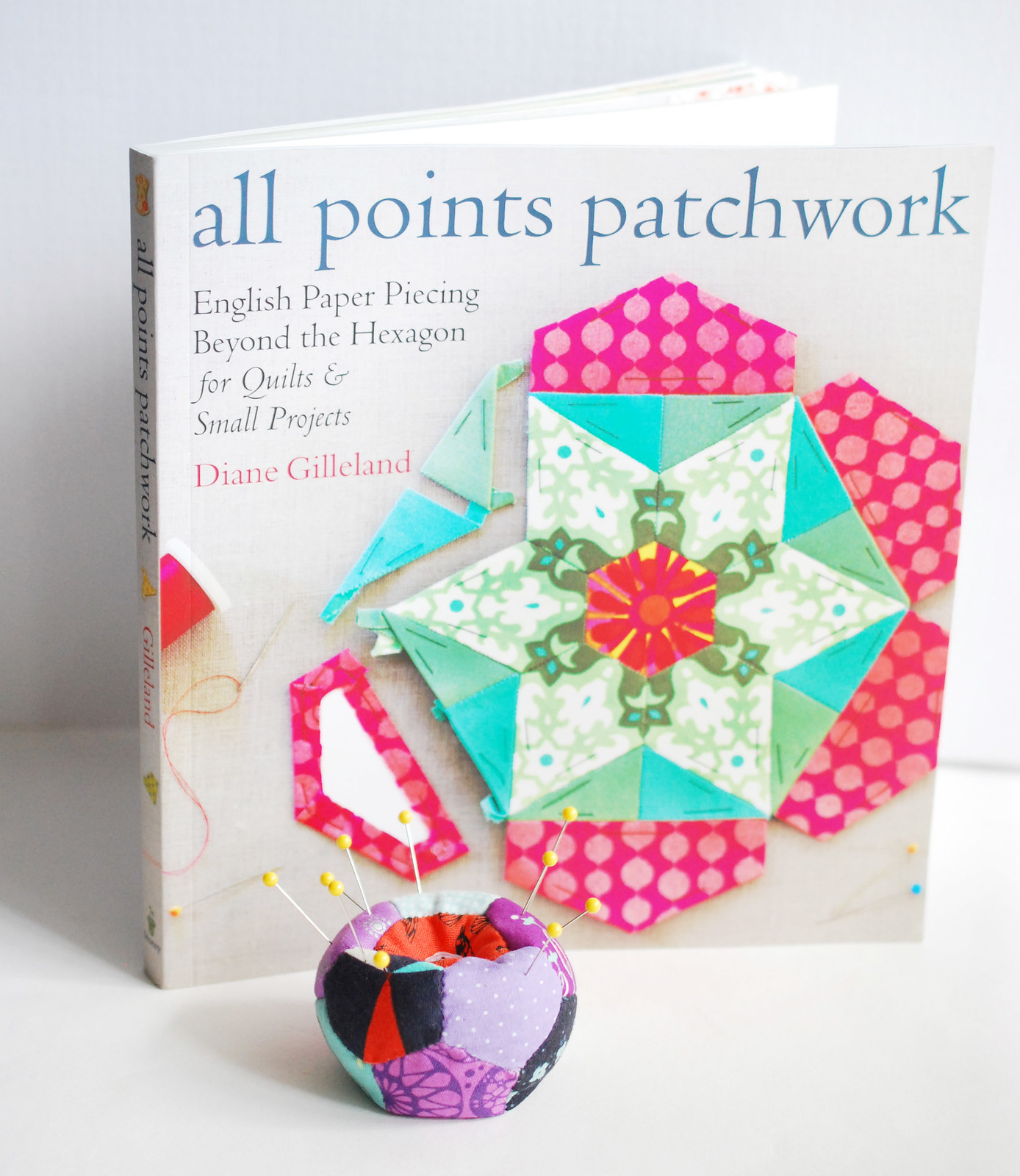

I love English paper piecing. I mean, I really love it. But when I first tried EPP five years ago, I have to admit, I was a little unsure about it. I had seen some folks making pretty things and wanted to give it a go, but I couldn't find good information.
The first thing I made was a pin cushion, which I find amusing, since I made a new EPP pin cushion to accompany today's book review. I followed a tutorial for my first EPP project, but I still felt like I was working without much help.
No one will ever have to try EPP that way again.
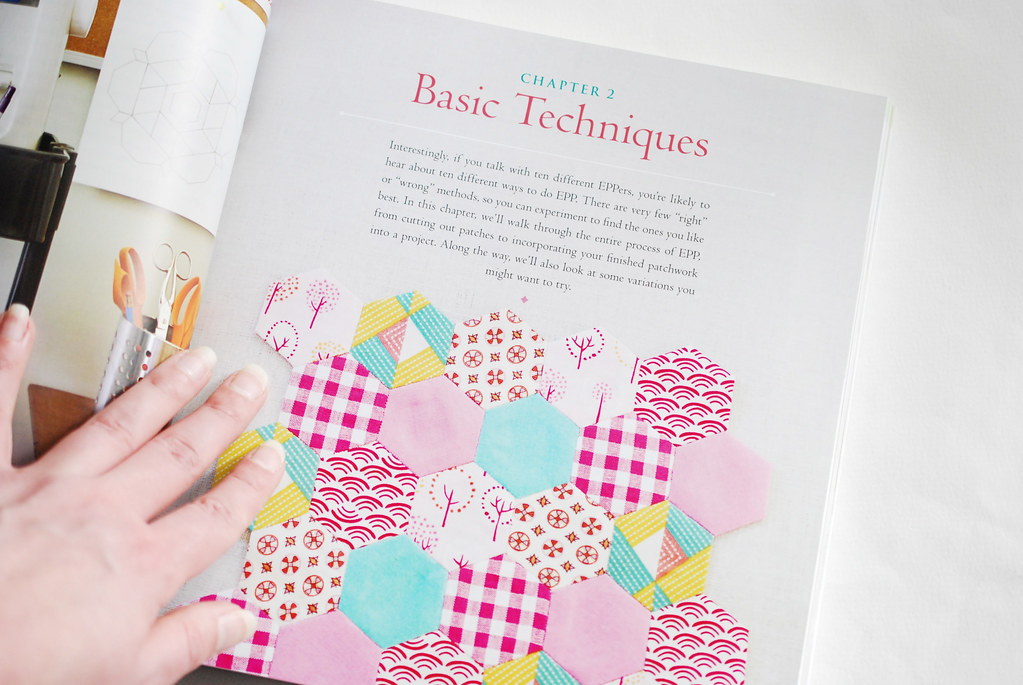
All Points Patchwork by Diane Gilleland is the much needed textbook on English paper piecing. This is different from most craft books because it's not a book of projects, but rather, it's an idea book and an overall how-to for the process. In short, this is the book that will allow you to design your own EPP anything.
And to make it even better, it's a beautiful book.
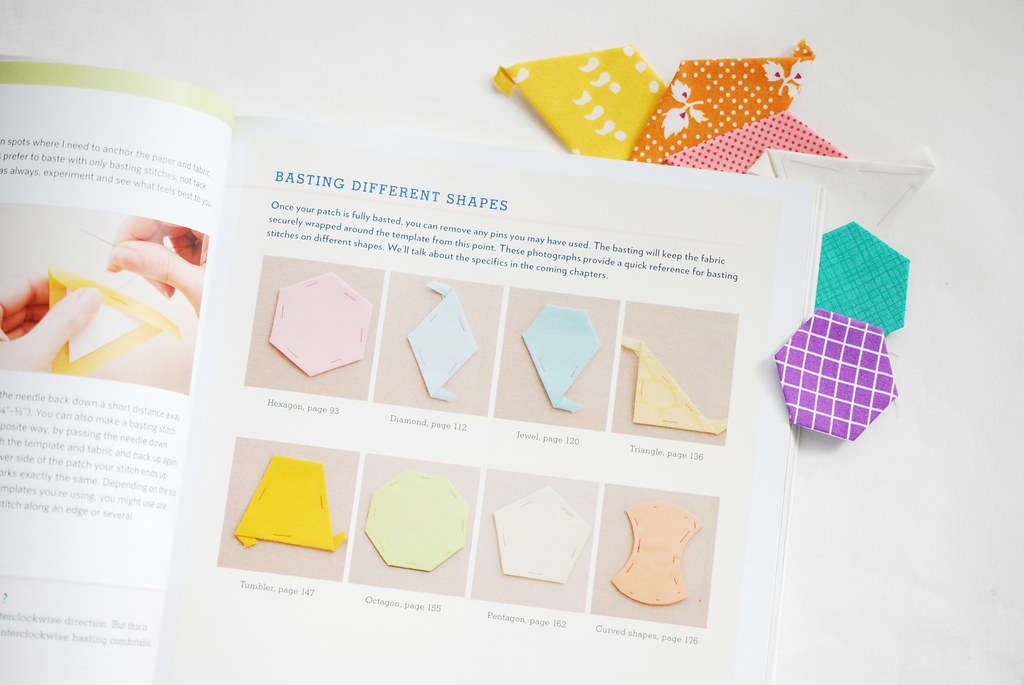
Diane (who is also a really wonderful sort of person) starts the book with a few chapters on the basics of English paper piecing: tools and supplies, techniques, building patterns. Then the rest of the book is divided into sections devoted to the most typical shapes used in EPP. These are the building blocks that allow you to create marvelous things.
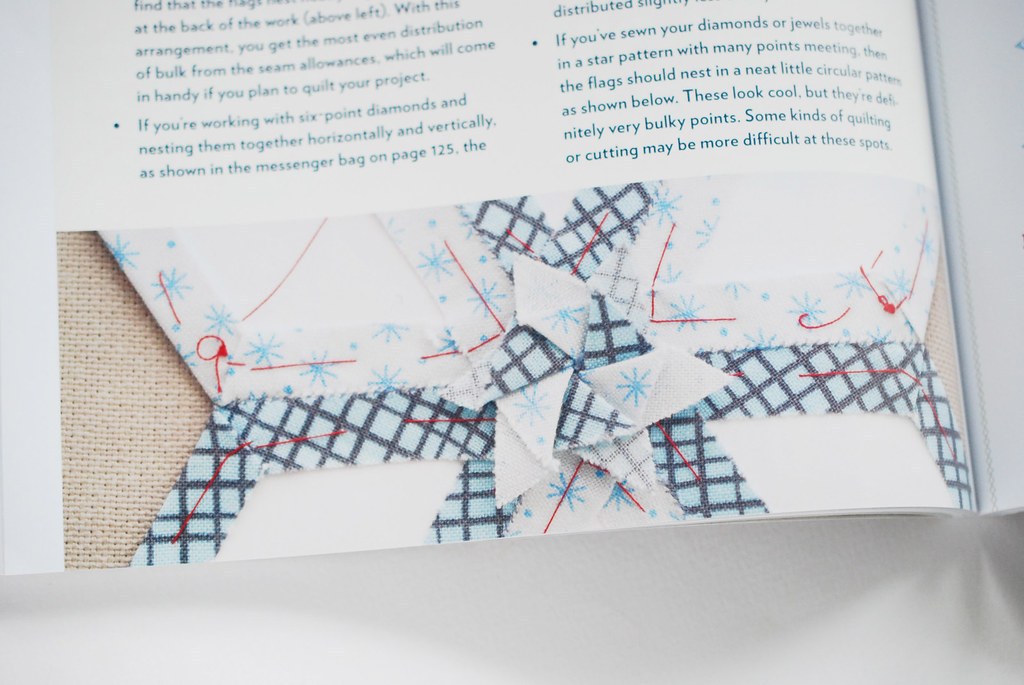
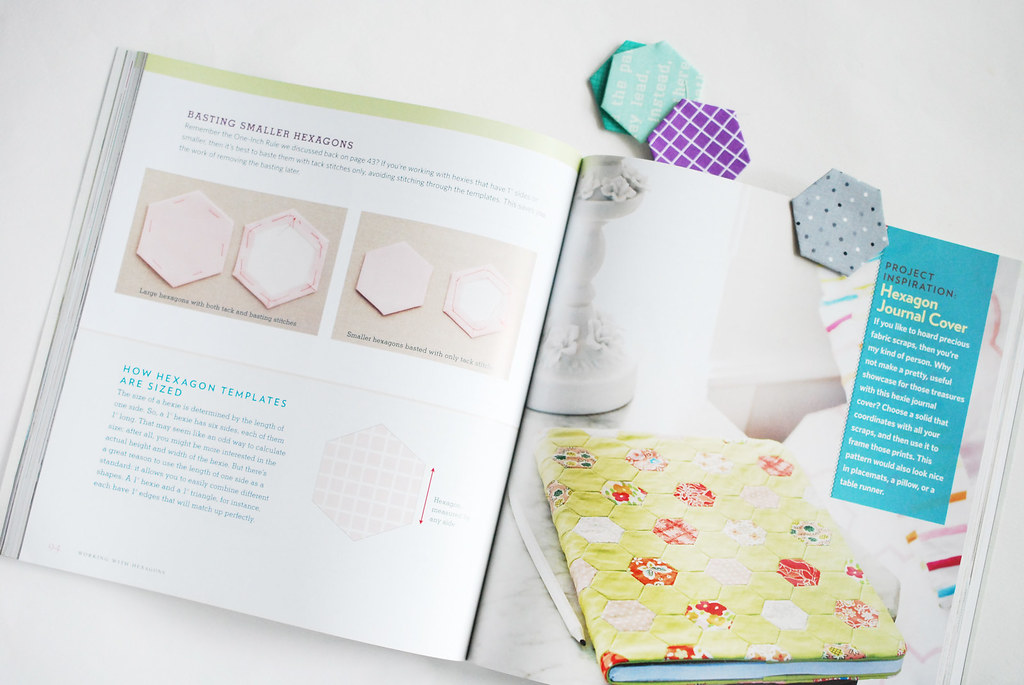
There are tips throughout the pages for things that you will run into with specific shapes, and all have incredibly detailed photos. There are also general guidelines and when it's important to follow certain "rules". These are the kinds of things that I wish I had known when I got started.
Some of the information in here I've picked up along the way (often from Diane!), but as I flip through each section I learn more and more. That tells me that this is an important book.
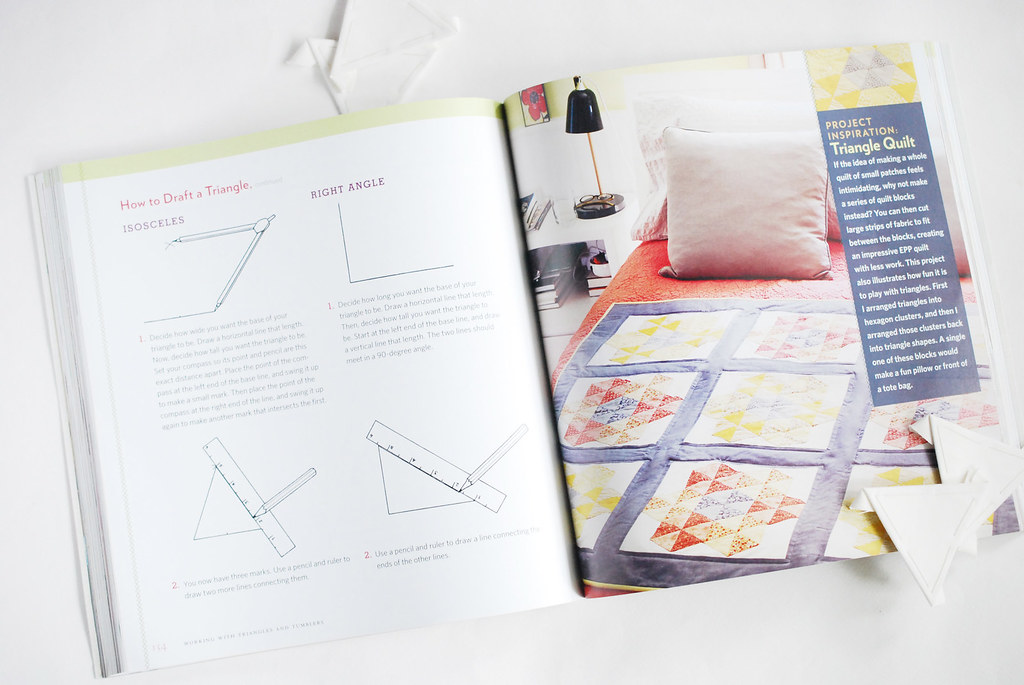
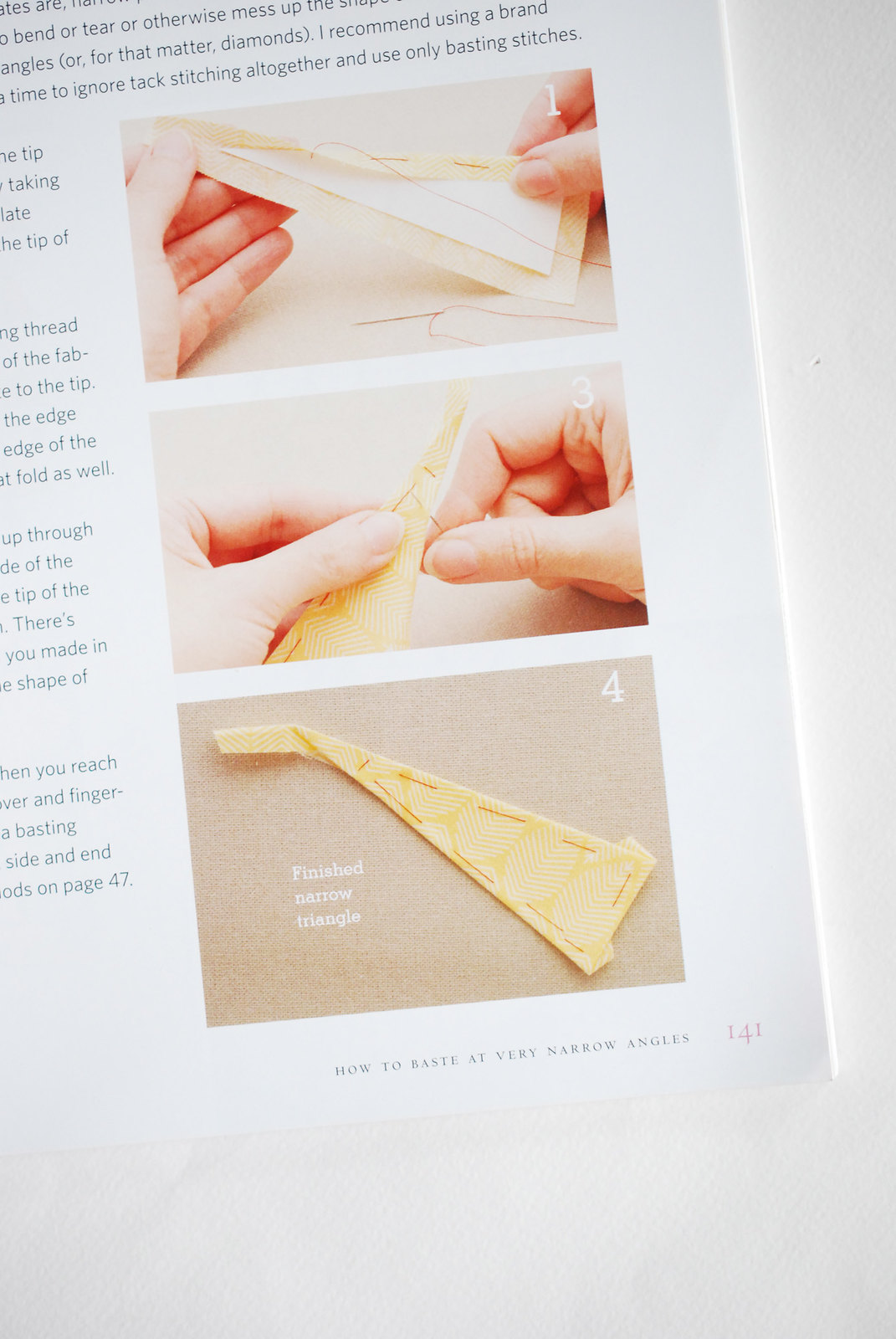
For each shape, you'll find instructions for drafting your own templates, using a computer or the old-fashioned way...with a compass, protractor and rulers!
I got to see a digital advance copy of All Points Patchwork a while back (I can't tell you how lucky I felt!), and I've been putting its information to use ever since. The instructions for working with narrow angles were ridiculously helpful when I made my brother the Patchwork Death Star!
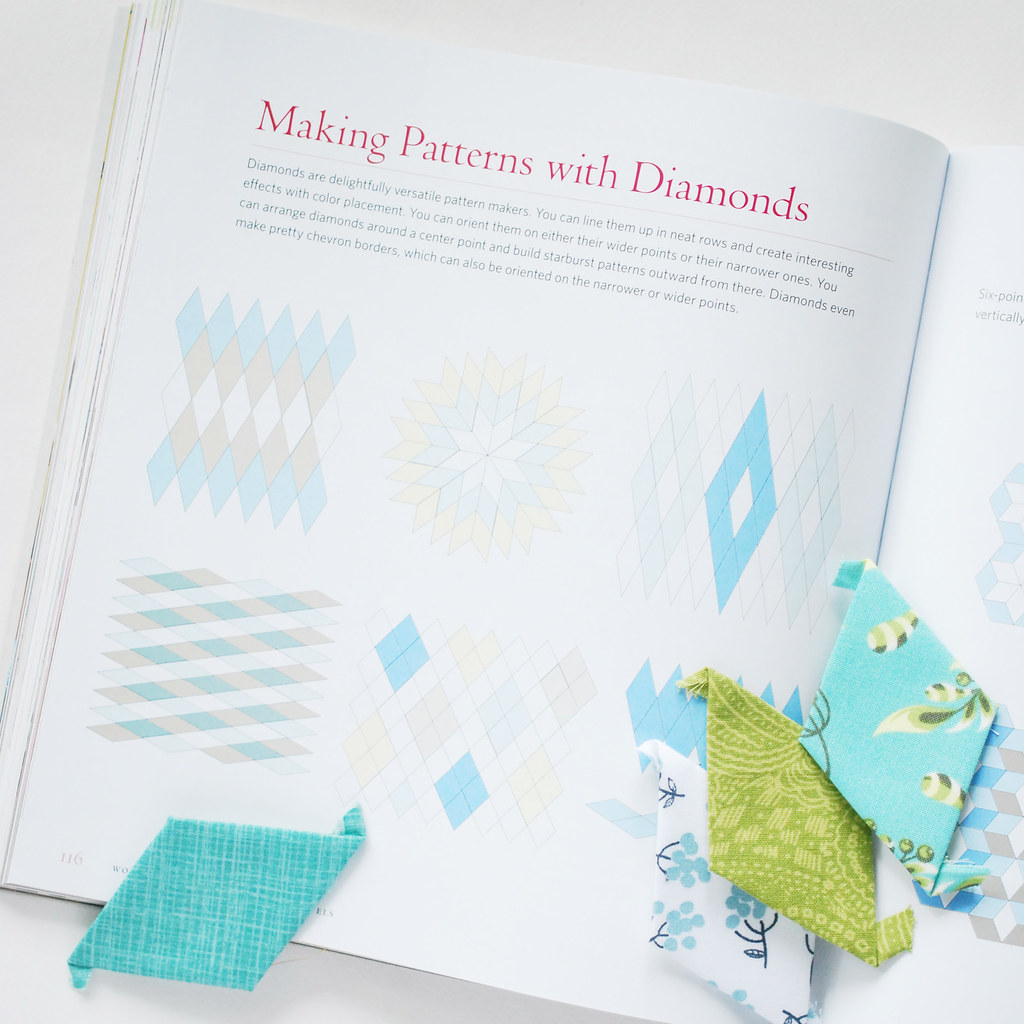
One of the things that I especially love is that you get to see how shapes can fit together. Some folks might find this intuitive, but I don't always. I can spot a pattern and figure it out, but I need to see it. Each shape section has a few pages like this displaying design ideas.
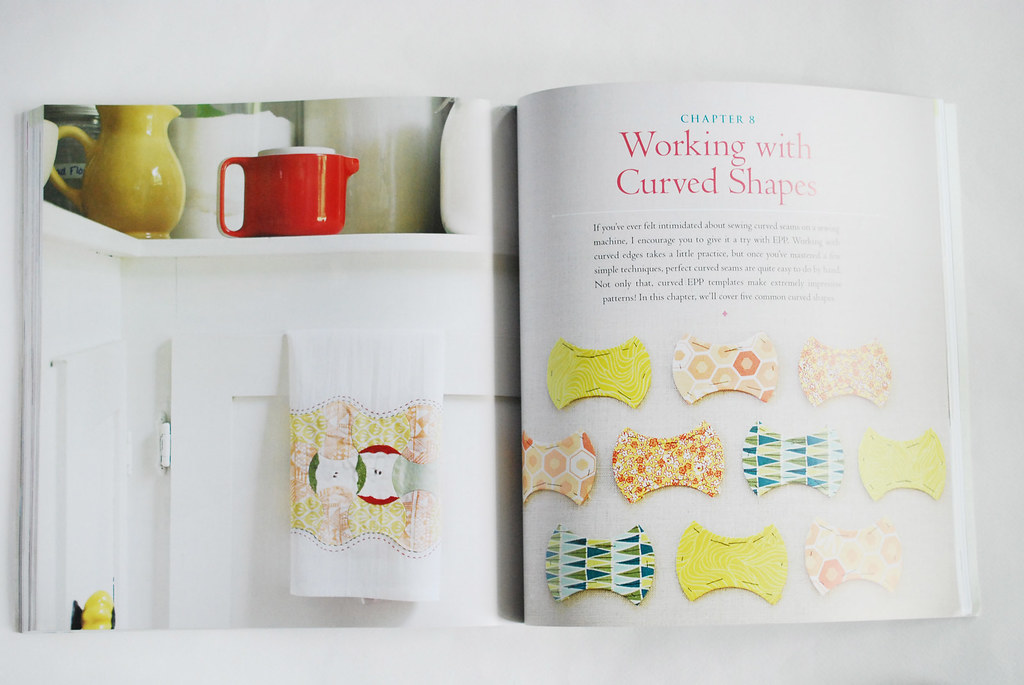
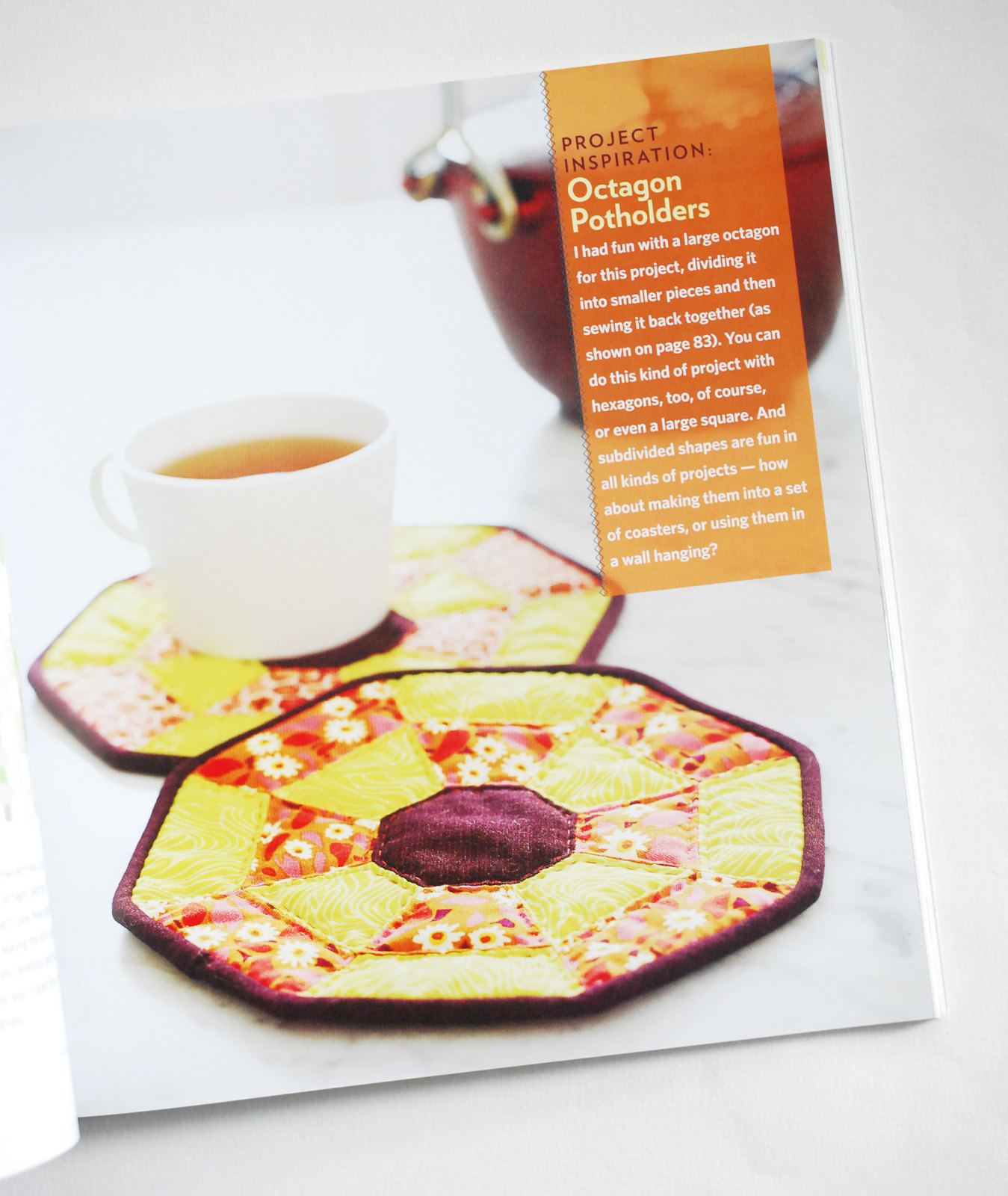
Remember how I said that this is a how-to and an idea book, but not a project book? That's true, but the ideas come in the form of photos of wonderful projects with brief descriptions of how they were made. They are perfect for EPP inspiration! And actually, you can probably figure out how to make them even without full instructions.
But, if you're looking for more help, Diane has created a website to accompany All Points Patchwork. She's gathered up all sorts of projects for you to jump into now that you've learned the techniques.
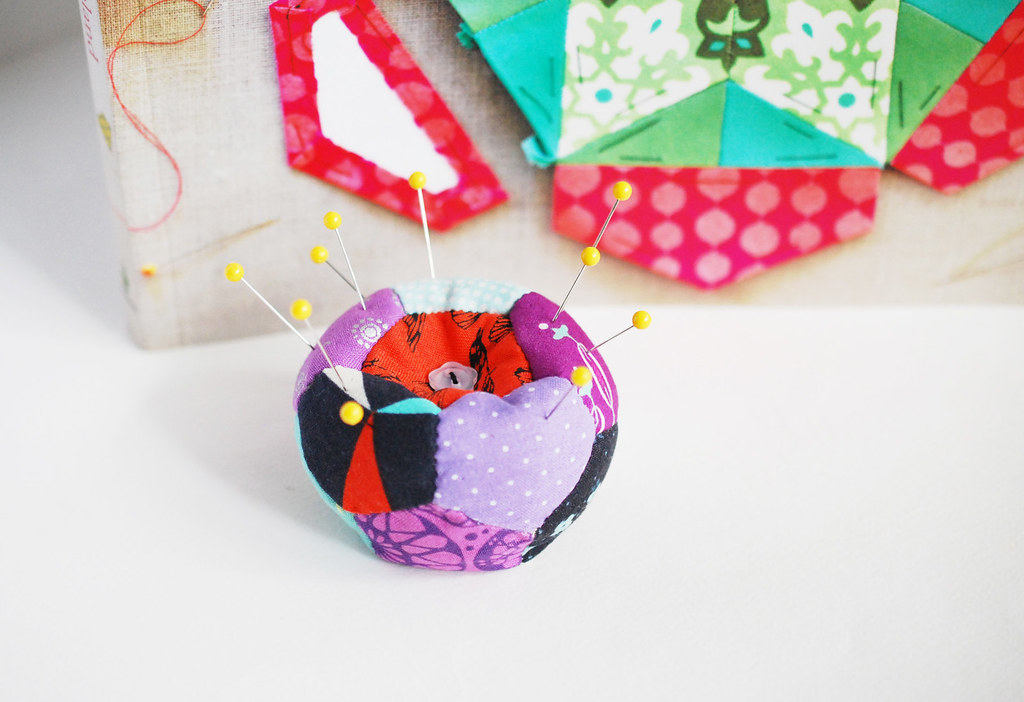
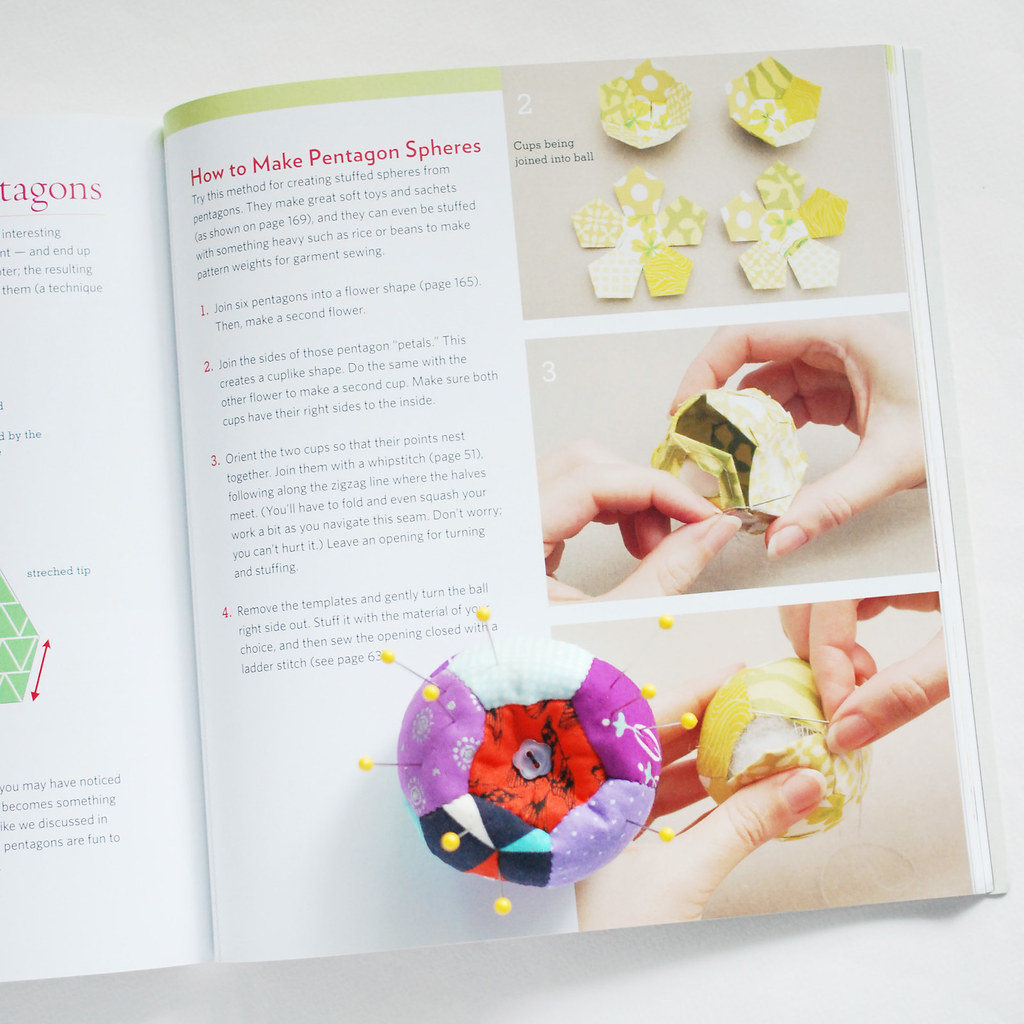
Since it's been a month of pentagons around here, I decided to make a project using that shape. I used the guide for making a pentagon sphere (which comes with the suggestion of making sachets), but filled it with crushed walnut shells to make a pin cushion.
With this type of filling, I found that it was pretty much impossible to have it be full and firm. So I took a little flower button (with five petals like a pentagon!) and pulled down the center which tightened it up. I LOVE it and it now makes its home in my EPP box.
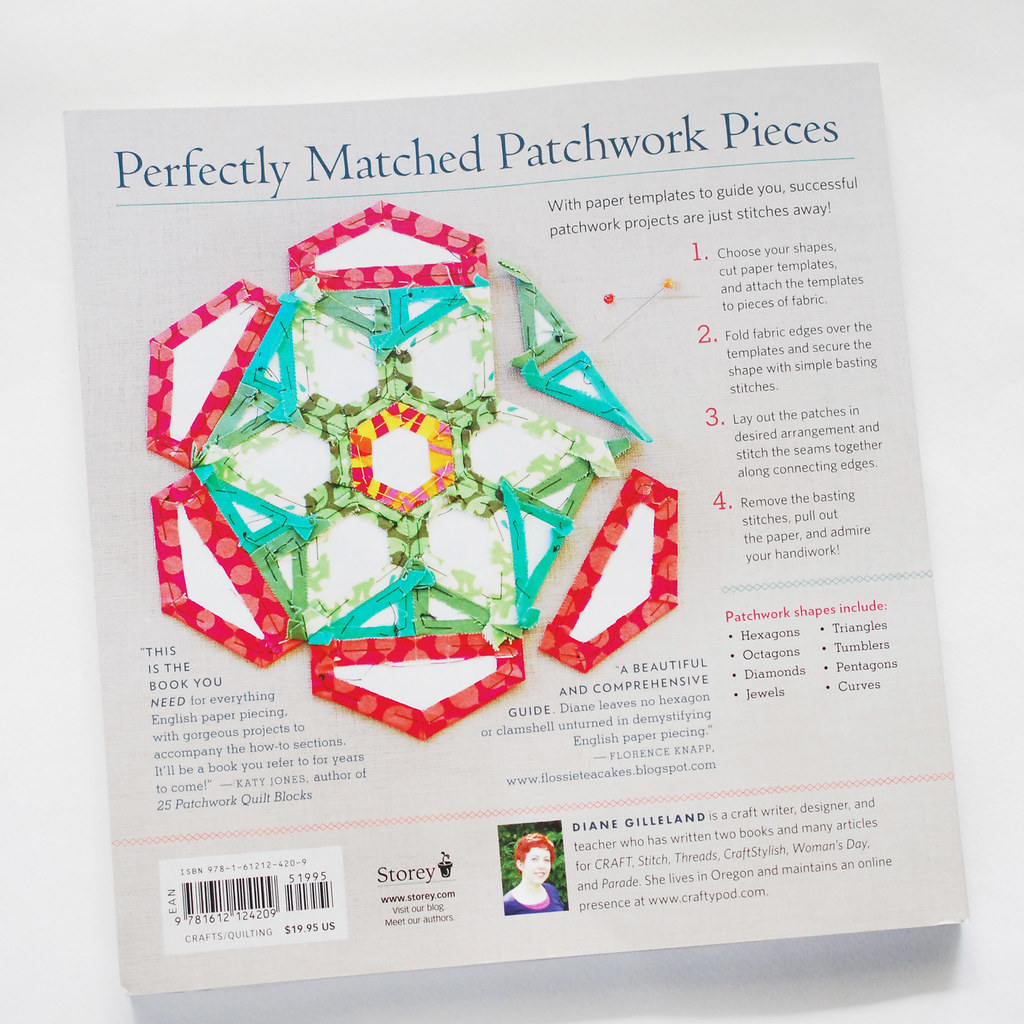
On the back of the book, Diane outlines the four simple steps for English paper piecing. It really is that easy. And yet, even after a few years of working with this method, I find that this book is an indispensable resource. I fully expect that my copy will look very worn after a while because I'll be going back to it again and again.
Many thanks to Storey Publishing for providing me with a copy of All Points Patchwork, and thank you, thank you Diane for writing the EPP book we've been waiting for!
I received this book yesterday and I can't put it down. I also can't wait to put it to good use!
ReplyDeleteSounds very good to me. Wanna have it! ; )
ReplyDeleteHave a nice day. Angela
Adding this to the top of my "must purchase" list! :)
ReplyDeleteI love your little pin cushion!
ReplyDeleteTwo questions though...
Where did you get crushed walnut shells for filling?
Have you made a pentagon piecing template to cut out similar to your hexie ones?
Thank you!
DeleteThe crushed walnut shells came from Petco. It's sold as lizard litter, and comes in a HUGE bag perfect for sharing with your sewing friends!
I haven't posted a pentagon template this size, but if you search for "1-inch pentagon template" you should be able to find some to print.
Wow, I see what you mean! Looked like a fabulous resource-- I'm going to look for this. I love your pincushion too 😊
ReplyDeleteI just got my book a couple of days ago-- I love it. Such good information. It really is a textbook for EPP but not in a boring way...in a great way. I teach some EPP classes and this will be a great resource.
ReplyDeleteThanks for this review, Mollie. I added the book to my wishlist! Since this is a how to and technique books, could you also recommend a good book with small projects in it? Thanks!
ReplyDeleteThat's a good question. The EPP books I've seen have been mainly larger projects. If you visit Diane's book website allpointspatchwork.com she has collected lots of small projects from around the Internet that are very fun.
Delete